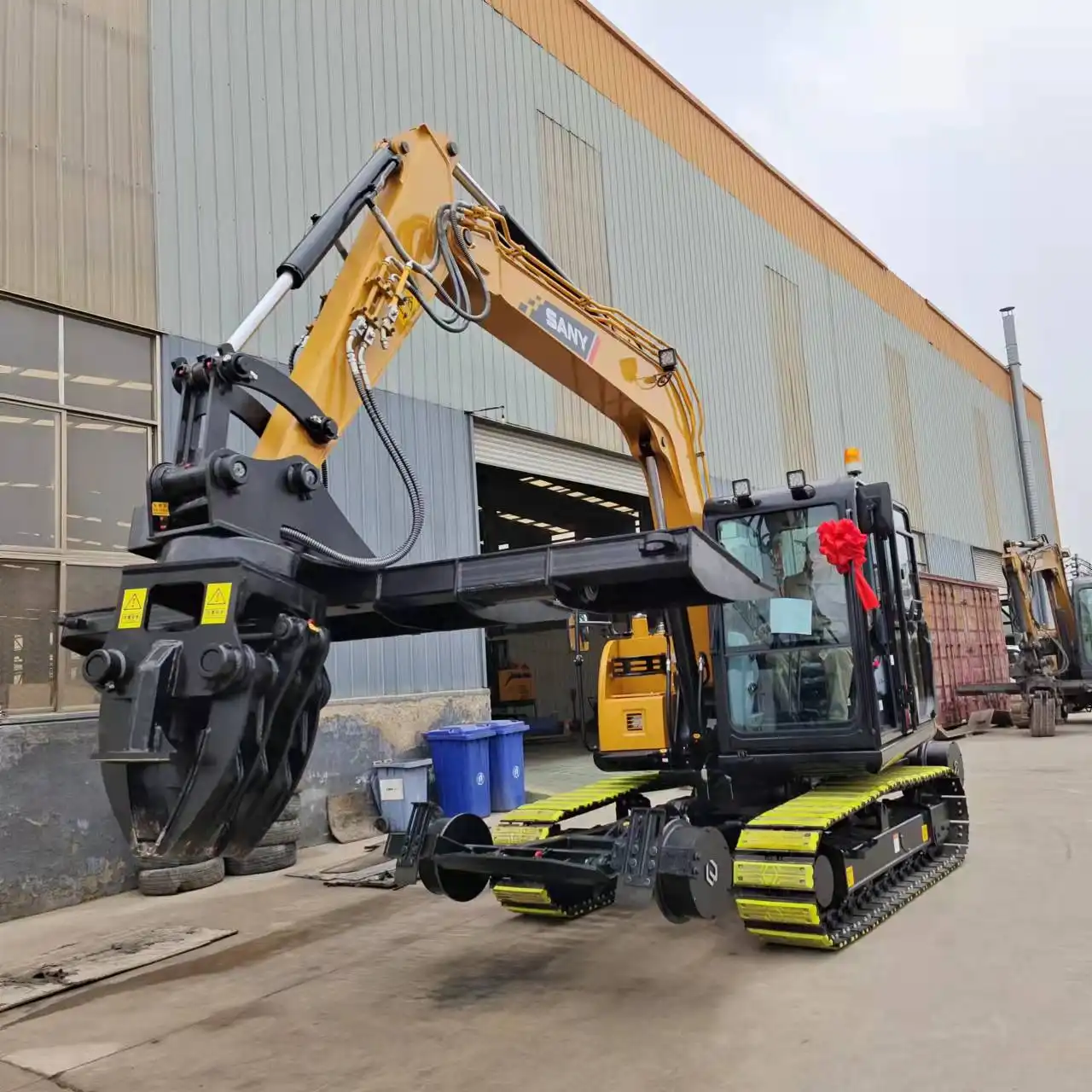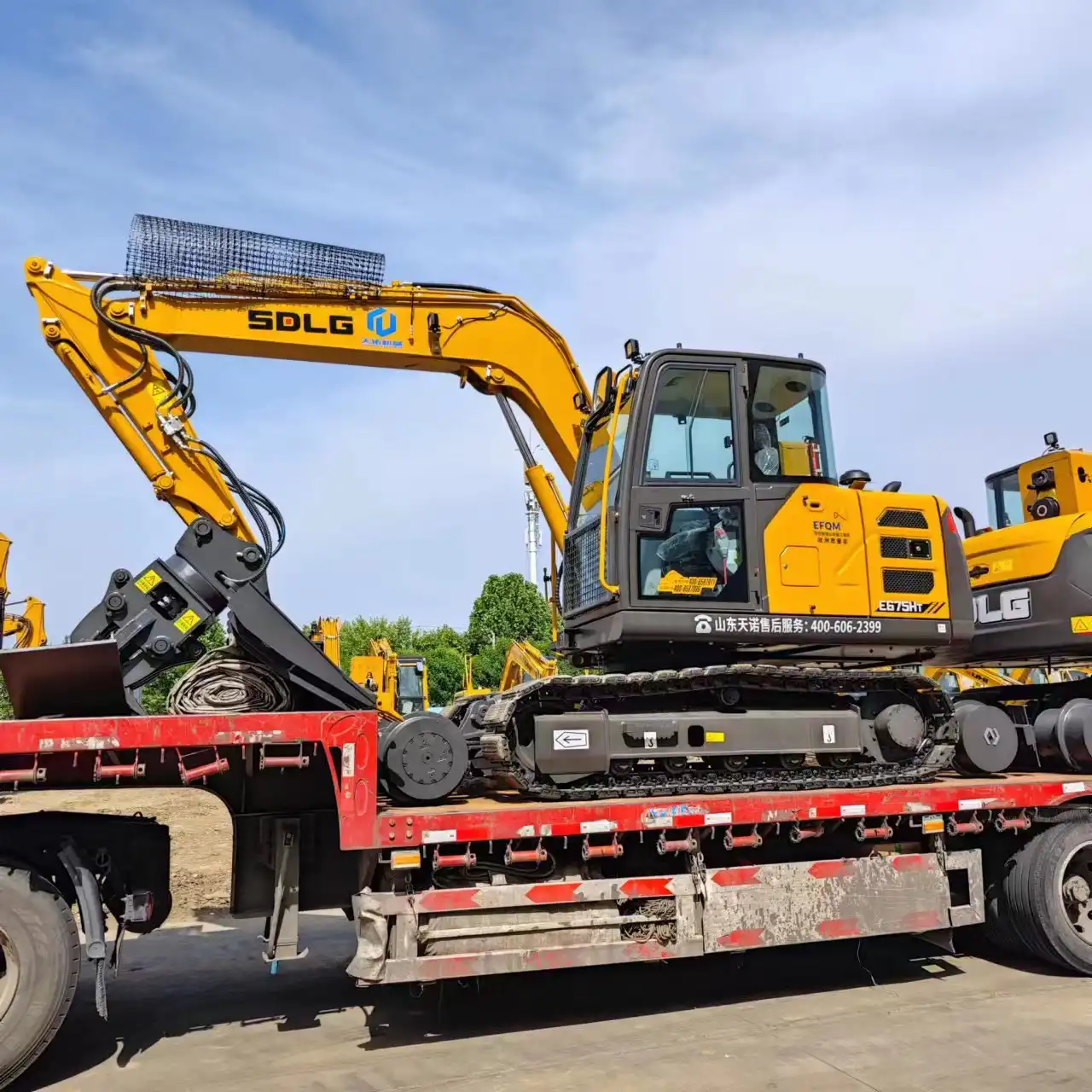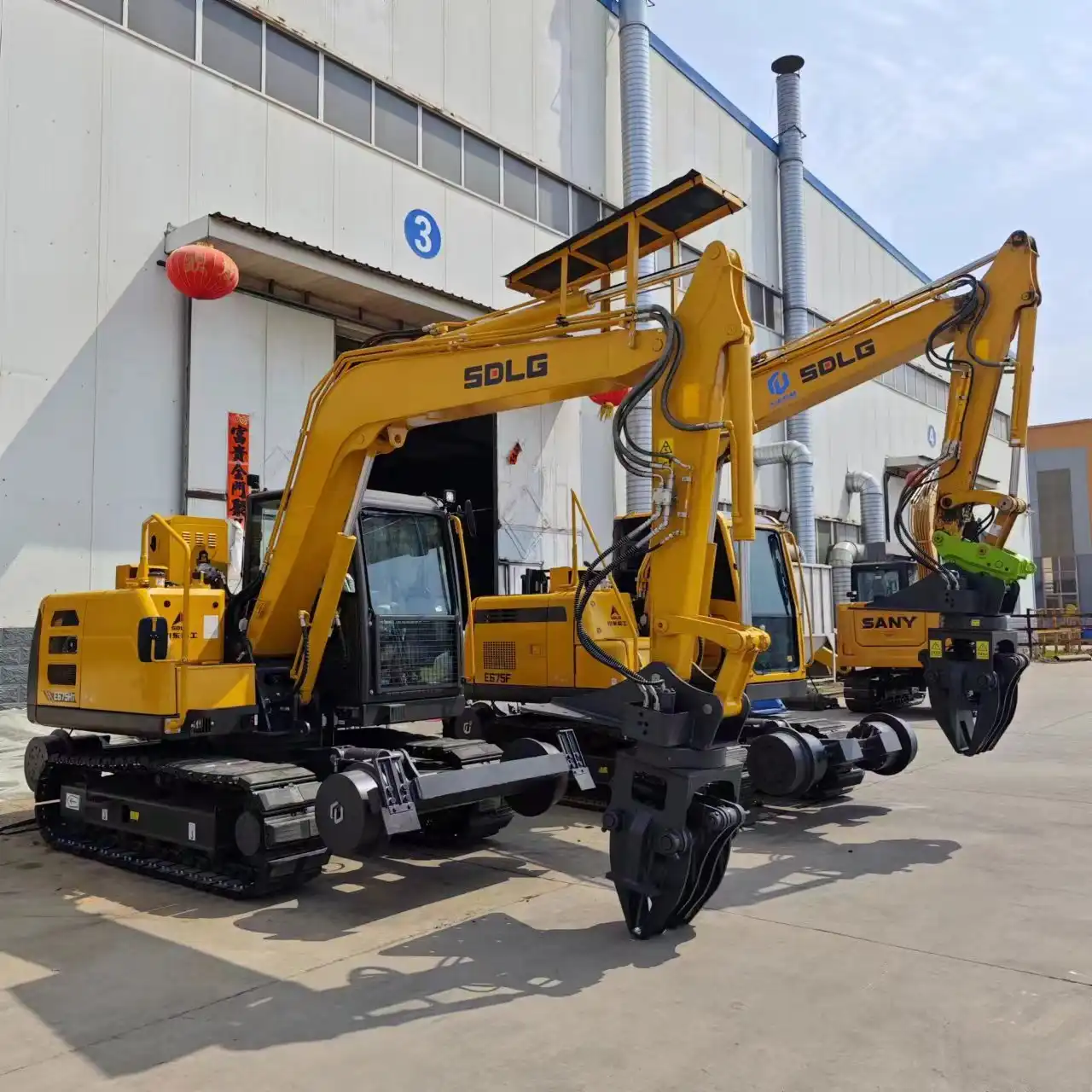How fast can a railway sleeper changer replace ties?
Railway sleeper changers have revolutionized track maintenance, significantly boosting efficiency in tie replacement. These advanced machines can replace an impressive 30-50 sleepers per hour, far surpassing manual methods. With skilled operators at the helm, a high-performance changing railroad ties machine can achieve even greater productivity, making it indispensable for modern rail infrastructure projects. This rapid replacement rate ensures minimal disruption to rail services while maintaining track safety and integrity.
30-50 Sleepers: Per Hour
Advanced railway sleeper changers boost productivity
The introduction of cutting-edge railway sleeper changers has transformed the landscape of track maintenance. These sophisticated machines leverage state-of-the-art technology to streamline the sleeper replacement process. By automating many of the labor-intensive tasks associated with tie exchange, these changers dramatically increase productivity.
Modern sleeper changers incorporate features such as hydraulic systems, precision control mechanisms, and ergonomic designs. These elements work in concert to facilitate swift and accurate sleeper removal and installation. The machines' ability to handle various sleeper types and sizes adds to their versatility, making them suitable for diverse rail networks.
Skilled operators maximize sleeper replacement speed
While the machinery itself is impressive, the role of skilled operators cannot be overstated. Experienced personnel who understand the nuances of the equipment and the intricacies of track maintenance can push these machines to their full potential. Through a combination of technical expertise and practical know-how, adept operators can fine-tune the replacement process, squeezing out every bit of efficiency.
Training programs and ongoing skill development for operators are crucial in maximizing the benefits of railway sleeper changers. As these machines evolve, so too must the capabilities of those who operate them. This synergy between human skill and mechanical prowess is what allows for the impressive replacement rates of 30-50 sleepers per hour.
Automated vs. manual: Comparing replacement rates
The stark contrast between automated and manual sleeper replacement methods becomes apparent when comparing their respective rates. Traditional manual replacement typically achieves only a fraction of the speed of modern changers. Where a team of workers might struggle to replace more than a handful of sleepers in an hour, a well-operated railway sleeper changer can effortlessly surpass this figure many times over.
This efficiency gap not only translates to time savings but also significant cost reductions and improved safety for workers. By minimizing the time spent on active tracks, automated systems reduce the risk of accidents and allow for more frequent and thorough maintenance schedules.

Entire Replacement Process
Step-by-step: Rapid sleeper replacement process
The remarkable speed of modern railway sleeper changers is best understood by breaking down the replacement process. Each sleeper is typically exchanged in a swift 2-3 minute operation, encompassing several precise steps:
- Extraction: The machine firmly grips the old sleeper and carefully pulls it from its position, ensuring minimal disturbance to the surrounding track and ballast.
- Removal: Once extracted, the old sleeper is swiftly moved away from the work area, often to a designated collection point for disposal or recycling.
- Preparation: The vacated space is quickly assessed and, if necessary, adjusted to receive the new sleeper.
- Insertion: A fresh sleeper is accurately positioned and lowered into place, guided by the machine's precision controls.
- Adjustment: Fine-tuning of the sleeper's position ensures perfect alignment with the rail and adjacent ties.
- Securing: The new sleeper is firmly fastened, often using automated tightening systems for consistency and speed.
This streamlined process, repeated dozens of times per hour, forms the backbone of efficient track maintenance and renewal operations.
Time-saving techniques for efficient tie exchange
To achieve such rapid replacement rates, railway maintenance teams employ various time-saving techniques. These strategies often include:
- Pre-positioning new sleepers along the track for quick access
- Utilizing multi-function machines that can perform multiple steps simultaneously
- Implementing precise scheduling to minimize downtime between replacements
- Employing advanced logistics to ensure a steady supply of materials and removal of old sleepers
By optimizing each aspect of the operation, maintenance crews can maintain a consistent pace, maximizing the number of sleepers replaced during each work window.
Precision and speed: Balancing quality and quantity
While speed is crucial, it must not come at the expense of quality. Modern railway sleeper changers are designed to maintain high precision even at rapid replacement rates. Advanced sensors and control systems ensure that each sleeper is placed with millimeter accuracy, maintaining proper gauge and alignment critical for safe rail operations.
Quality control measures are integrated into the process, with continuous monitoring and adjustments made in real-time. This balance of speed and precision is what sets apart top-tier sleeper replacement operations, ensuring that the increased pace of work does not compromise the integrity of the track.

Cooperate With Track Maintenance Trains
Synergy: Sleeper changers and maintenance trains
The true potential of railway sleeper changers is fully realized when they operate in tandem with track maintenance trains. This powerful combination creates a mobile workshop capable of sustained, high-speed track renewal. Maintenance trains typically carry essential supplies, including new sleepers, fasteners, and ballast, directly to the work site.
By integrating sleeper changers with these supply trains, crews can work continuously without frequent stops for resupply. This seamless operation significantly reduces downtime and increases the overall efficiency of large-scale track maintenance projects. The synergy between these specialized vehicles allows for an uninterrupted flow of materials and removed sleepers, keeping the replacement process running smoothly.
Continuous operation for large-scale track renewal
Large-scale track renewal projects benefit immensely from the ability to conduct continuous sleeper replacement operations. With the support of maintenance trains, sleeper changers can work through extended shifts, maximizing the use of available track possession time. This continuous operation is particularly valuable in busy rail corridors where maintenance windows are limited.
The capacity for non-stop work allows maintenance teams to cover significant track distances in a single operation. This approach not only accelerates project timelines but also ensures consistency in track quality across long stretches of railway. The ability to replace hundreds or even thousands of sleepers in a single, coordinated effort is a game-changer for major infrastructure upgrades.
Optimizing workflow for major railway overhauls
When planning major railway overhauls, the integration of sleeper changers and maintenance trains requires careful orchestration. Optimizing the workflow involves:
- Strategic positioning of supply trains to maintain a constant flow of materials
- Coordinating multiple sleeper changers to work in sequence or parallel, depending on track layout
- Implementing efficient logistics for the removal and disposal of old sleepers
- Utilizing real-time monitoring systems to track progress and identify potential bottlenecks
- Deploying support crews to handle ancillary tasks, keeping the main operation focused on sleeper replacement
By fine-tuning these elements, railway maintenance teams can achieve remarkable efficiency, transforming entire sections of track in compressed timeframes. This level of optimization is essential for minimizing disruptions to rail services and maximizing the return on investment in track maintenance equipment.

FAQ
1. What factors affect the speed of railway sleeper replacement?
Several factors influence replacement speed, including the type and condition of existing sleepers, track accessibility, weather conditions, operator skill, and the specific model of sleeper changer used.
2. How does automated sleeper replacement impact track safety?
Automated replacement generally improves track safety by ensuring consistent installation quality, reducing human error, and allowing for more frequent maintenance, which helps prevent track degradation.
3. Can railway sleeper changers work on all types of track?
Most modern sleeper changers are designed to work on standard gauge tracks, but specialized models exist for narrow gauge and other non-standard configurations. Always check the specifications of the equipment for compatibility.
4. What is the environmental impact of using railway sleeper changers?
Sleeper changers can have a positive environmental impact by extending the life of tracks, reducing the frequency of major overhauls, and often incorporating more eco-friendly practices in sleeper disposal and replacement.
5. How do railway sleeper changers contribute to cost-effective maintenance strategies?
By significantly reducing labor costs, minimizing track possession time, and allowing for more precise and timely maintenance, sleeper changers contribute to more cost-effective long-term track management strategies.
Where to Buy Railway Sleeper Changers?
For those in the market for high-quality track maintenance equipment, Tiannuo Machinery offers a comprehensive range of solutions. Our product line includes not only sleeper changing machines but also screening machines, tamping machines, and various excavator modifications tailored for railway applications. We understand the diverse needs of the rail industry and provide customized solutions to meet specific project requirements. To learn more about our railway sleeper changers or discuss your track maintenance equipment needs, contact us at boom@stnd-machinery.com. Our team of experts is ready to assist you in finding the perfect equipment to enhance your railway maintenance operations.
References
- Smith, J. (2023). "Advancements in Railway Sleeper Replacement Technology". Railway Technology Magazine, 45(3), 78-85.
- Johnson, L. et al. (2022). "Comparative Analysis of Manual vs. Automated Sleeper Replacement Techniques". International Railway Journal, 60(2), 112-120.
- Brown, A. (2023). "Optimizing Track Maintenance: The Role of Modern Sleeper Changers". Railway Track and Structures, 119(7), 22-28.
- Federal Railroad Administration. (2022). "Safety Impact of Automated Track Maintenance Equipment". Technical Report FRA/ORD-22/15.
- European Railway Review. (2023). "Innovations in Continuous Track Renewal Operations". Special Issue: Track Maintenance, 29(4), 45-52.
- Thompson, R. (2023). "Economic Benefits of High-Speed Sleeper Replacement in Rail Infrastructure Projects". Railway Gazette International, 179(5), 36-42.
About Author: Arm
Arm is a leading expert in the field of specialized construction and railway maintenance equipment, working at Tiannuo Company.

